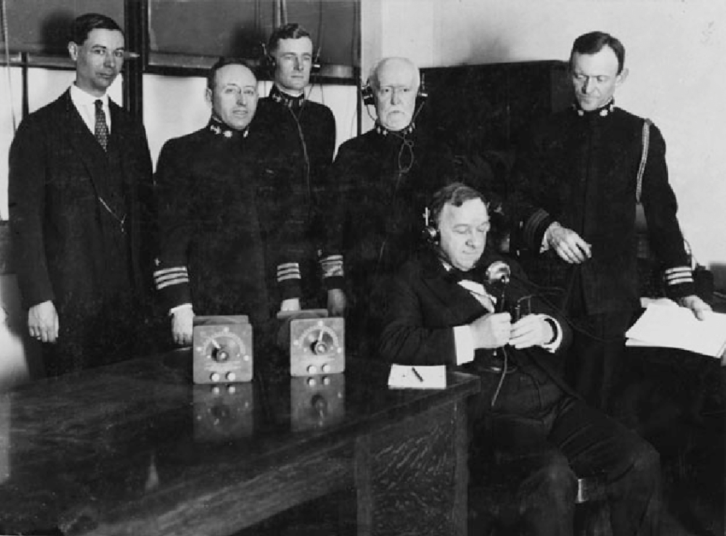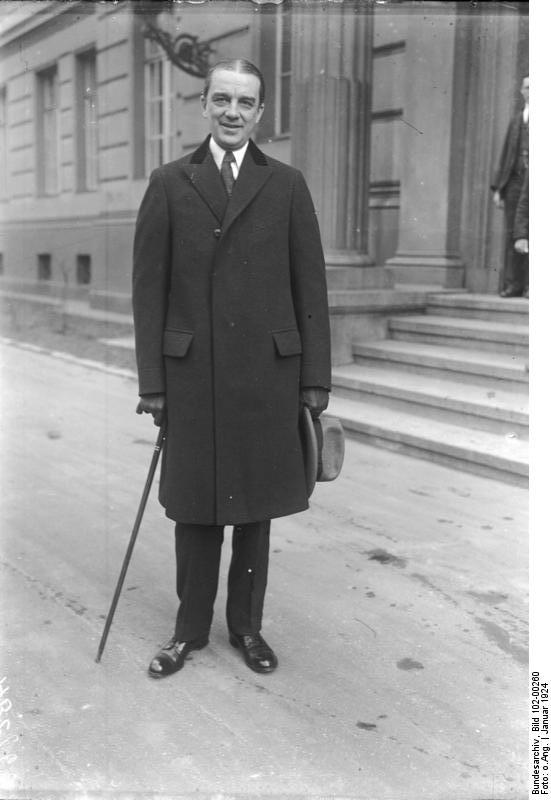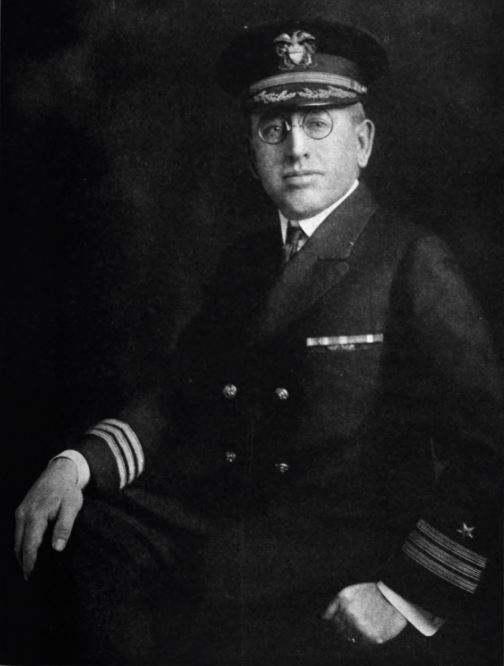This week we’re celebrating the 100th birthday of the consumer technology industry with the story behind how our business came to be and of those responsible for creating it. You can read Part 1 here.
On Nov. 5, 1918, in the midst of the Spanish Flu pandemic and six days before the end of World War I, the U.S. held its mid-term elections. More free market, laisse faire Republicans took over both houses of Congress for the first time in a decade, which proved critical to the birth of radio.
Given the vulnerabilities of spark wireless technology, the U.S. Navy sought to keep radio a post-war military technology as a matter of national security. A few weeks after the Armistice on November 11, 1918, House Democrats introduced HR 13159, “Government Control of Radio Communication,” which would have placed radio under the permanent and complete control of the U.S. Navy.

Hearings were held Dec. 12-13, then again on Dec. 17-18, 1918, under the aegis of the Committee on Merchant Marine and Fisheries, with Secretary of the Navy Josephus Daniels and Commodore Stanford C. Hooper, in charge of the Navy’s Radio Division, defending the Navy’s position. With a country crisscrossed with telegraph and telephone lines, what did landlubbers need with wireless except to cause problems?
See also: CES 2021 Date Changes, Kick-Off Keynote Speaker Announced
Under long and withering questioning by Republicans, primarily George W. Edmonds (R, PA) and William S. Greene (R, MA), Daniels and Hooper tacitly admitted that government control over radio would stifle technical innovation, among other drawbacks. Major opposition to a military monopoly also came from the major radio patent holders, mostly American Marconi, the domestic subsidiary of British Marconi, the world’s largest radio company, via testimony from the company’s commercial manager, David Sarnoff. Committee members also were deluged with letters of opposition to a naval monopoly from radio amateurs, primarily the Radio League of America and the American Radio Relay League.
Fortunately for history, the bill was tabled soon after Republicans took over Congress in January 1919. Faced with the inevitable, and with control of radio returning to the Commerce Department under the Radio Act of 1912, the Navy set April 15, 1919, as the date to lift amateur radio reception restrictions, and Oct. 1, 1919, to lift the ban on transmissions.
The summer interregnum between these two dates would prove a raucous period, both for the development of radio technology and the business of radio.
Profits or Patriotism?
Considering the vulnerability of the trans-Atlantic telegraph cables laid across the ocean floor in the 1860s, being able to transmit messages wirelessly across the ocean was of great national and financial interest in the early days of wireless. To solve the long-distance wireless problem, General Electric engineer Ernst Alexanderson, building on work by Charles Steinmetz and Fessenden, developed what would be called the Alexanderson alternator between 1904-1906. Over the succeeding decade-plus, the small mountain-sized alternator, using carrier wave and AM technology, would eventually be the lone method of heaving wireless Morse messages across the Atlantic.

GE’s primary customer for the Alexanderson alternator was, naturally, the U.S. Navy. In 1915, however, the tall, distinguished yet personable pipe-smoking GE general council and VP Owen D. Young started negotiations to sell the immense and powerful transmitter to British Marconi, a transaction worth between $45-$60 million in today’s dollars.
World War I and the U.S. Navy’s restriction on all non-military radio equipment halted the potential deal. Once the war ended, Young resumed talks.
Young’s background gave no clue to his future role in consumer technology. He was born on October 27, 1874, the only child of Smith and Ida Young, on the family dairy farm in the upstate New York town of Van Hornesville. He started his schooling at the local little red schoolhouse, then the academy in East Springfield, then, at age 16, at St. Lawrence, earning his B.A. in 1894. After receiving his law degree from Boston University two years later, Young joined the law practice of Charles Tyler in Boston.
Young became Tyler’s partner in 1907. Work with a prominent electrical company brought him to the attention of Charles A. Coffin, the co-founder and first president of GE. Coffin convinced Young to join GE in 1913, and soon took on the Alexanderson alternator sale negotiations.
See also: Why 55% Of Remote US Workers Could Face An Unexpected Tax Liability, And How It Can Be Avoided
If amateur or commercial radio frightened the U.S. Navy, the sale of the Alexanderson alternator to British Marconi was a nightmare. The sale would effectively give a foreign company a monopoly over the world’s radio communications.

On April 8, 1919, a week before the radio reception restriction was due to lift, Commodore Hooper and his superior, director of Naval Communications Admiral William H.G. Bullard, imposingly decked out in their crisp double-breasted Navy blue dress uniforms adorned with all manner of military ribbons, intimidatingly marched into Young’s Manhattan office. The naval officers were essentially under orders from President Wilson to stop the sale. In a February 2 memo sent from the Paris Peace Conference, the President’s laid out a policy priority “to safeguard American pre-eminence in radio.”
Arguing against the sale, the two Naval officers appealed to Young’s patriotism. Young’s interest was, of course, recouping GE’s huge investment in developing the alternators, considering the company’s only other customer for them was the U.S. government.
Ironically, the officers provided Young with a solution to this business vs. national security conundrum, also via a solution approved by President Wilson. Bullard and Hooper suggested “that the Navy Department would be sympathetic with the formation by the General [Electric] Company and other clearly American interests of an American-owned, world-wide, radio-operating company, which would be strong enough to deal with the Marconi Companies as an equal.”
In other words, the American government was encouraging Young to create an American radio company to compete with British Marconi and to keep the Alexanderson alternators American. And over the summer of 1919, that’s exactly what Young did.
Young’s first job: convince British Marconi to sell its American subsidiary to the new company. Knowing his efforts were backed by the U.S. government, one lever was a threat. In a May 12 letter, Young told American Marconi president Edward J. Nally that his company’s interests “are greatly menaced because of the English holdings in the Company and the attitude of the [U.S.] government toward such holding.”
See also: Executive Insight: Focusing On The Future: Retail Life After COVID-19
To add some heft to this economic and diplomatic intimidation, Bullard, who had traveled to France to join the U.S. delegation at the Paris Peace Conference, and President Wilson, on May 23, met with Marconi himself, then a member of the Italian delegation. None of the participants reported on the details, but it’s likely that the President let Marconi know that selling his American subsidiary to an American radio company wouldn’t hurt relations between British Marconi and the U.S. government.
As a salve included in the deal struck between Young and the beleaguered McNally, it was decided that American Marconi’s executive team, including its ambitious commercial manager and booster of radio broadcasting, David Sarnoff, would remain intact to operate the new company. On July 25, Young and McNally signed the initial deal that transferred American Marconi’s assets to the new American radio entity.

Young then used GE’s considerable muscle, backed by the not-so invisible hand of the U.S. government, to cajole, convince and eventually corral the other major American radio patent holders – the Navy, AT&T, Westinghouse, and United Fruit, which operated a large fleet of ships around Latin America equipped with the latest wireless gear – to join what was essentially a radio patent pool.
On October 17, 1919, the new American radio company was born, logically named the Radio Corporation of America – better known to history as RCA, with Young named the company’s first CEO.
With American radio interests and IP now largely centralized, each of the member companies could now pursue their own pieces of the wireless business with willing partners, without fear of patent litigation and backed by the federal government.
The question was: what, exactly, was that business?
Next: A Pittsburgh Radio Sensation
See also: Happy 100th Birthday To The Consumer Technology Industry! Part 1













